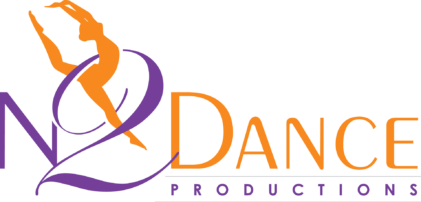One, two, three, four. Why hello there! We were just counting our reps. Speaking of counting, we are already three months into the year! Have the events of the past month been fruitful for your career?
If not, then maybe you should take a breather to think, then spurt! Though the same could not be said for dancing. Before engaging in any physical activities, be it light or strenuous, our bodies need to be primed to avoid the adverse effects of too much physical activity, especially since the goal is to become healthier. One great way of preparing the body is through warming up. Much like an engine being revved before a race, warming up is the body’s way of ensuring that not only do you remain in tip-top shape while being physically active, but you are also the best at it. And so, today you will learn everything you need to know about exercises and warming up before dancing!
Exercises? Workout? What’s that?
We felt the need to tell you because many people seem to mix the two terms a lot. The term exercise generally refers to a single physical task, while a workout is a set composed of multiple exercises that are made either focusing on toning or building a certain body part or one’s overall build. Also, when someone says they’re going to work out, they may mean that they’re going to the gym.
It is also important to note that not every physical activity is an exercise. While walking is a normal everyday thing and is still considered an exercise, physical activities only do become an exercise when they are planned and or done with the intent to increase physical fitness.
Why should I warm up first?
Just like we mentioned earlier, warming up makes sure that your body is already conditioned to take on physical-heavy tasks. Unlike workouts, warming up is essential, even before your workout routine. Here is a list of why warmups are a must:
· Increased cardiovascular performance
Warming up literally warms up your body temperature! This is induced by an increase in heart rate, pumping blood along with oxygen and nutrients that fuel your muscles, making sure they function as intended. Skipping a warm-up session means that you’re suddenly putting a lot of demand on your body, leaving you sluggish. This is because the rate at which energy is transported within your body can’t keep up without a jumpstart.
· Boosted muscular performance
Continuing from earlier, faster blood circulation will enable your body to move extensively. Stepping up your body temperature accelerates nerve transmission and muscle metabolism. This means that your muscles will respond faster, be more flexible and easier to move, endure more stress and exhaustion, effectively lowering the risk of injuries caused by strains, tearing, and such.
· It wakes you up
Warmups do not only tell your muscles that it’s time for work but obviously, for you to wake up! It may not be a lump of muscle, but we still have to train our brains! This goes especially to people like us who warm-up minutes after waking up, and ready both our physique and mental strength for the day we’re about to take on. Warm-up exercises are known to make you more active by boosting your mood and energy, providing sharper memory, higher attentiveness, and mental clarity.
Things to consider in your warmup routine
Just like an egg during the boiling process, you mustn't immediately expose it to high heat, but instead, have its temperature raised gradually along with the water. The same thing goes with the intensity and duration of your warmup sesh. Warming up usually takes a good five to ten minutes, but it really varies depending on what you’re preparing for. Keep in mind that warming up should cause you to sweat, but not leave you already feeling exhausted, which defeats the point of doing so.
Warmups typically consist of light exercises such as aerobics and dynamic stretching; some also include calisthenics. You can look up a warmup routine that applies for everyone if you’re undecided, but it’s undoubtedly better if it’s more personalized. An effective routine is a routine appropriate to the activity you’re prepping for, taking into factor the intensity and the body parts that will take the most stress.
As a dancer, you should mostly focus on stretching and increasing your flexibility so that it is easier to move around and perform a certain dance move. A good option would be to practice yoga or various stretching exercises for unlocking certain motions. Increasing endurance through cardio exercises such as walking, jogging, or jumping jacks will help you last longer on the floor.
What happens next?
Warming up helps your body engage in physical activity, making sure you are ready to show off! If warming up is supposedly done before dancing, then you absolutely must cool down as well.
Cooling down is just as important as warming up. While warmups aim to boost heart rate, the latter is done by gradually lessening the load done on your body, safely lowering your heart rate and blood pressure back to their normal state. An abrupt stop will cause you to feel dizzy, light-headed, and fatigued, which is dangerous because it might lead to complications such as you possibly fainting or experiencing heart and/or respiratory problems.
Now you know what warming up and cooling down is, there wouldn’t be anything lost in suggesting to work out, right? If dancing isn’t already your form of working out, we recommend that you lay the mat or hit the gym to tone down that body! Dancers must aspire to be at the top of their fitness game to avoid injuries or hindrances while mastering their craft.
You’ve reached the end of the article, safe to assume that you’re now mentally warmed up! What about your body? Ready to dance? Let us know!
